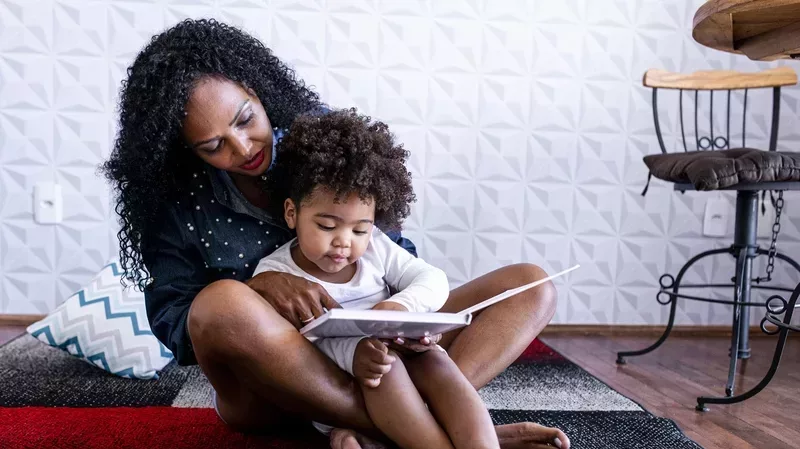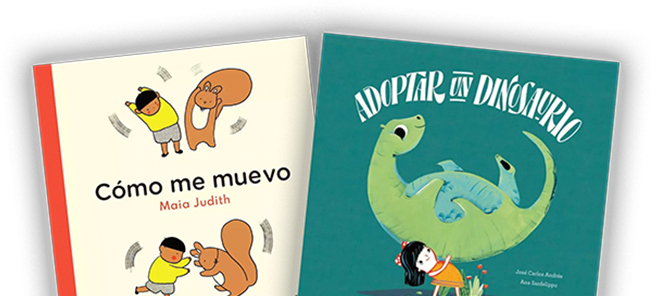
As a parent intent on raising a lifelong bookworm, you may find yourself wondering what you can do to make reading a more enthralling experience for your child. There are numerous ways to engage your child in a book—no matter if it’s a board book, picture book, or a book full of your favorite poetry. When you co-read, you can help your child appreciate the characters they meet, the illustrations they see, and the lessons to be learned.
Your child looks forward to storytime with you more than you know. That’s because co-reading gives your child an opportunity to spend quality time with you, which strengthens your bond and allows your child to go on a literary adventure that empowers them to use their imagination and express themselves in a safe, judgement-free environment.
Kudos to you for making the time to co-read with your child! In this post, we’ll discuss the many ways in which you can make storytime a more active and participatory event.
1. Let Your Bookworm Select the Book
As an adult, you pick the books you want to read, so why not permit your child to do the same? Besides, if your child is responsible for plucking some books from their shelf, you give them the chance to not only pick their favorites, but also the freedom and courage to open a book they haven’t yet fully explored.
2. Don’t Disregard That Cover!
Most adults are guilty of bypassing the book cover so we can dive into the story and escape into a whole new world. Let’s not forget that when we co-read with children, we owe it to them to take a few minutes to study the cover and talk about the title. Many children’s book covers feature stunning illustrations, and book titles typically do an excellent job of providing insight into what the book is about. Both the cover and the title, therefore, make for excellent conversation starters.
3. Use Affectation
Children’s books contain such interesting, colorful characters. That said, we encourage you to try your best at using affectation when you co-read. Try to alter your voice to match the gender and personality of each character . . . we’d be willing to bet that your child will get a huge kick out of this. Plus, it’s a fun way to help them distinguish which character is speaking. The more expression and animation you can bring to a story, the more engaged your child will become. Give it your best shot!
4. Share Your Own Stories and Memories
Do you know what children tend to love? Hearing stories about their parents’ childhood memories. When you co-read with your child, you should feel free to pause the story when appropriate and say something like, “When Mommy was little, I rode a horse just like this one!” What a thrill it must be when a child recognizes that their parent is enjoying the book just as much as they are, and that they are willing to share a little story of their own inspired by the book’s contents.
5. Ask Questions (And Lots of Them!)
Whether you’re reading a short and sweet picture book about a rebellious skunk, or a read-aloud book that details a little boy’s wild adventure on a pirate ship, try to remember to stop and ask your child thoughtful open-ended questions.
Here are some examples:
- Who is your favorite character in the story so far? Why do you like this character?
- What do you think ___________ is going to do next?
- When was the last time you felt as happy as ______________?
- How do you think __________ feels about this decision?
Asking your child questions like these persuades them to think more deeply about the characters and plotline, as well as recall some of their own similar experiences. In regards to the latter, you’re giving your child a chance to potentially view the story as relatable—and that’s a good thing!
6. Encourage Your Child to Ask YOU Questions
As fun as it is to ask your child questions and listen to their answers, do afford them the same opportunity. Ask if they have any questions that you can answer. Your child, for example, may be confused a character’s decision or reaction. They also may just want to hear what Mommy or Daddy likes about the book. The more you and your child talk throughout the duration of your co-reading session, the more connected your child will feel to you and to the book in front of them.
7. Introduce Bilingual Titles
Co-reading is an excellent time for you to introduce your child to a second language. By doing so, you can help them expand their vocabulary, understand new cultural concepts, and pave the way to helping them become independently bilingual. Here at Sol Book Box, we specialize in curating Spanish book boxes for children at all stages of bilingual learning. When you co-read with your child and pronounce words that they may not know—including words in a foreign language—your child will be inspired to listen more closely. You two can even have some fun repeating words such as “adios,” “hola,” and “amigo.”
Do you know what all of the above suggestions have in common? They encourage you to read with your child—not to your child. There’s a big difference there. If you read to your child, you’re not leaving room for them to engage with you and respond to the story. In comparison, reading with your child means that you are inviting them to share their thoughts and feelings; to give you a glimpse into their imaginations; to regard the book (and reading in general) the same way they regard their favorite toy or TV show.
We’ll end with this blog with some interesting food for thought. In an article that appears on ReadingRockets.org, Dr. Marie Carbo, the founder and executive director of the National Reading Styles Institute, suggests that “children's emotions about reading have a huge impact on whether or not they'll become lifelong readers.” Dr. Carbo’s valuable insight is something to keep in mind when you co-read with your child not only now, but also well into the future.




